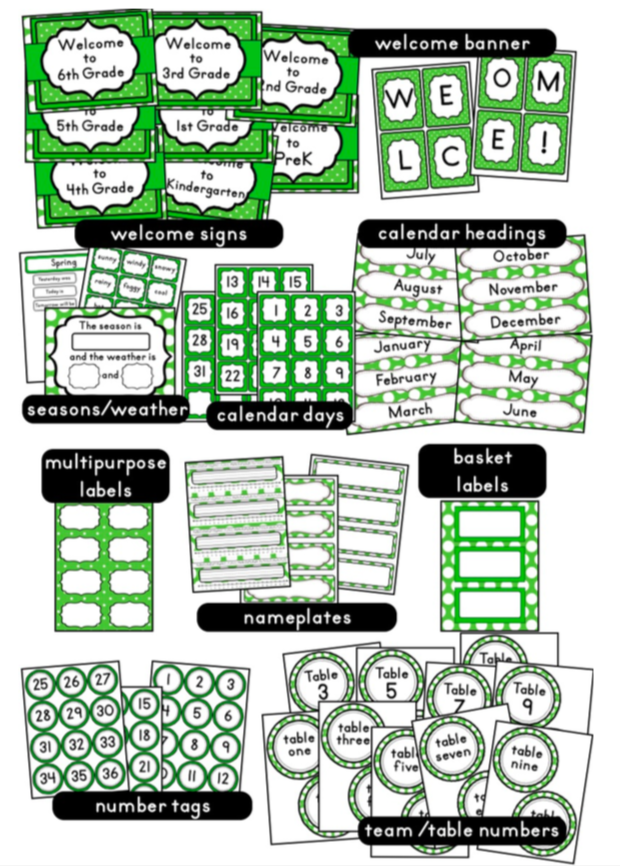Welcome to our deep dive into green classroom decor! As an educator, I’ve had firsthand experience in transforming my classroom into a vibrant, eco-friendly space that not only promotes learning but also engages students and inspires them to care for the environment. In this guide, we will explore the various elements of green classroom decor, share inspirational ideas, and arm you with practical tips to implement these changes in your own space.
Why Go Green? The Importance of Sustainable Classroom Decor
Adopting a green approach in classroom decor goes beyond aesthetics. It plays a crucial role in promoting sustainability and environmental consciousness among students. Here’s why it matters:
- Enhanced Learning: A well-decorated classroom can positively impact student engagement and learning outcomes.
- Health Benefits: Eco-friendly materials can lead to a healthier indoor environment, reducing allergies and respiratory issues.
- Environmental Awareness: Incorporating sustainable practices educates students on important environmental issues.
Key Elements of Green Classroom Decor
Let’s break down some essential components to consider when creating a green classroom environment.
1. Sustainable Materials
Choosing materials that are sustainably sourced is critical. Here are some materials to consider while decorating:
| Material | Eco-Friendly Characteristics |
|---|---|
| Bamboo | Fast-growing, renewable resource. |
| Recycled Paper | Reduces waste and saves trees. |
| Non-Toxic Paints | Supports indoor air quality. |
2. Plants and Greenery
Adding plants to your classroom decor not only enhances the aesthetic appeal but also cleans the air. Here are some easy-care options:
- Spider Plants: Great air purifiers.
- Peace Lilies: Beautiful flowers with air-cleaning properties.
- Succulents: Low maintenance and add a pop of green.
Benefits of Classroom Plants
Integrating plants into your classroom decor can:
- Improve air quality.
- Boost creativity and focus.
- Provide a calming effect on students.
3. Upcycled and Recycled Decor
Using upcycled materials is a fantastic way to add unique decor elements. Consider the following:

- Repurpose old furniture with a fresh coat of non-toxic paint.
- Create bulletin boards from old pallets or fabric scraps.
- Use glass jars for storage and decorative purposes.
Steps to Create a Green Classroom Decor
Now that we’ve covered the essential components, let’s walk through the steps for creating your green classroom.

Step 1: Assess Your Space
Begin by evaluating your current decor. Identify items that can be replaced or repurposed and consider how best to incorporate greenery.
Step 2: Set a Budget
Creating a green classroom doesn’t have to be expensive. Prioritize what you need and allocate budget accordingly. Invest in quality items that will last longer, even if the initial cost is higher.

Step 3: Involve Your Students
Get your students involved! Let them participate in the design process. This not only fosters a sense of ownership but also teaches them about sustainability.
Step 4: Implement Gradually
Make changes step-by-step to avoid overwhelming yourself and your students. Start with smaller alterations and build up to larger projects, like repainting walls or creating a student garden.

Eco-Friendly Classroom Themes
If you’re looking for inspiration, consider these themes that encapsulate green classroom decor:
1. Nature-Inspired Decor
This theme integrates natural colors like greens, browns, and blues. Use materials that reflect the outdoors, such as wood, stone, and plants.

2. Minimalist Design
A minimalist classroom can reduce clutter and create a peaceful learning environment. Choose multipurpose furniture and white walls decorated with a few key pieces.
3. Colorful and Playful
Incorporate bright colors using sustainable materials. Use reusable fabrics for cushions and playful wall art to keep the space vibrant and engaging.

Pros and Cons of Green Classroom Decor
Like any design approach, there are pros and cons associated with green classroom decor:
| Pros | Cons |
|---|---|
| Healthier indoor environment | Initial cost can be higher |
| Improves student engagement | May require more upkeep (plants, etc.) |
| Promotes environmental awareness | Limited availability of some sustainable materials |

Frequently Asked Questions (FAQs)
What are some budget-friendly green decor options?
Consider DIY projects using recycled materials, like making art from old magazines or using fabric scraps for bulletin boards. Shopping at thrift stores can also yield unique decor pieces at low prices.
How can I involve students in creating the decor?
Students can help by choosing plants, painting furniture, or creating art for the walls. This involvement fosters creativity and teaches them about sustainability.
What are the best plants for classrooms?
Some of the best plants for classrooms include Spider Plants, Peace Lilies, and Snake Plants. They require minimal care and thrive in indoor environments.
How can I maintain indoor air quality with decor?
Choose non-toxic paints and materials, ensure adequate ventilation, and maintain indoor plants that improve air quality. Regular cleaning also helps in maintaining a healthy environment.
Can I make my classroom decor eco-friendly without spending much?
Absolutely! Focus on reusing items you already have, decluttering the space, and incorporating natural elements without any cost. Simple swaps can lead to significant changes.
Conclusion: A Call to Action for Eco-Conscious Educators
Transitioning to a green classroom decor approach is an exciting journey that not only enhances the learning environment but also instills a deep sense of responsibility for our planet in the students. By making small, conscious changes, you can create a vibrant, eco-friendly classroom that inspires the next generation.
Remember, every little effort counts. Let’s make our classrooms a greener place together!